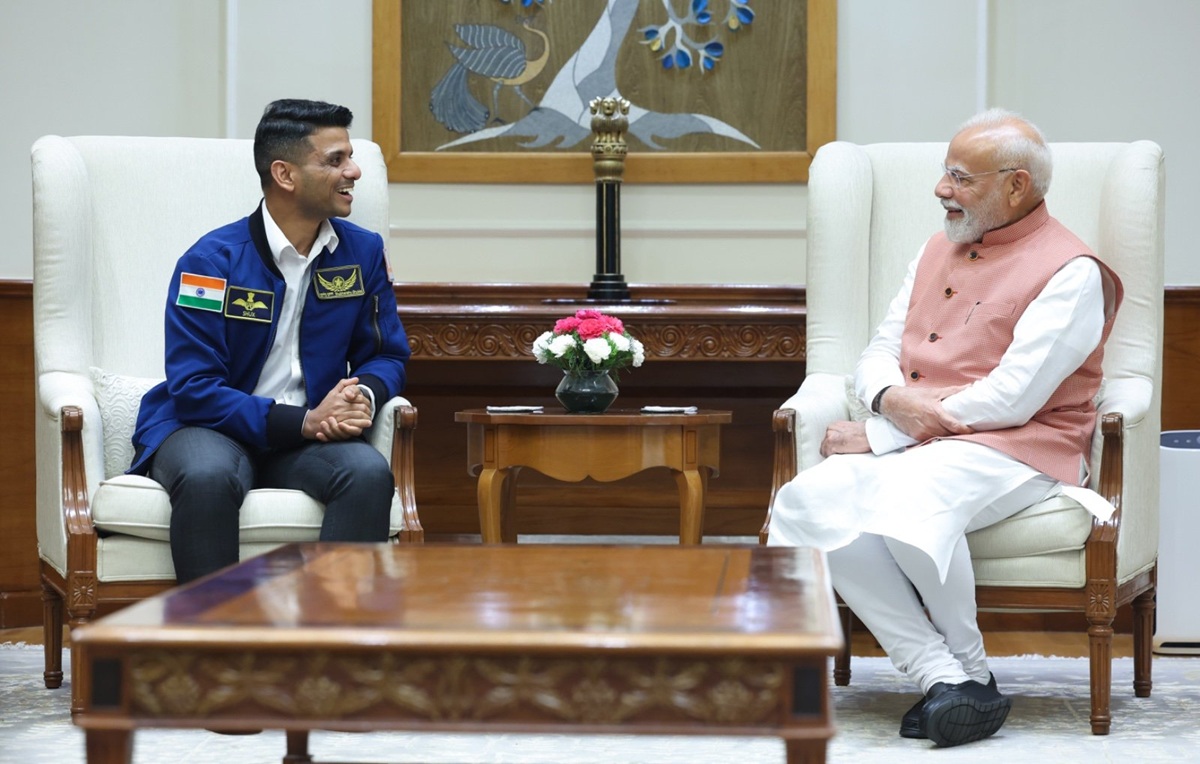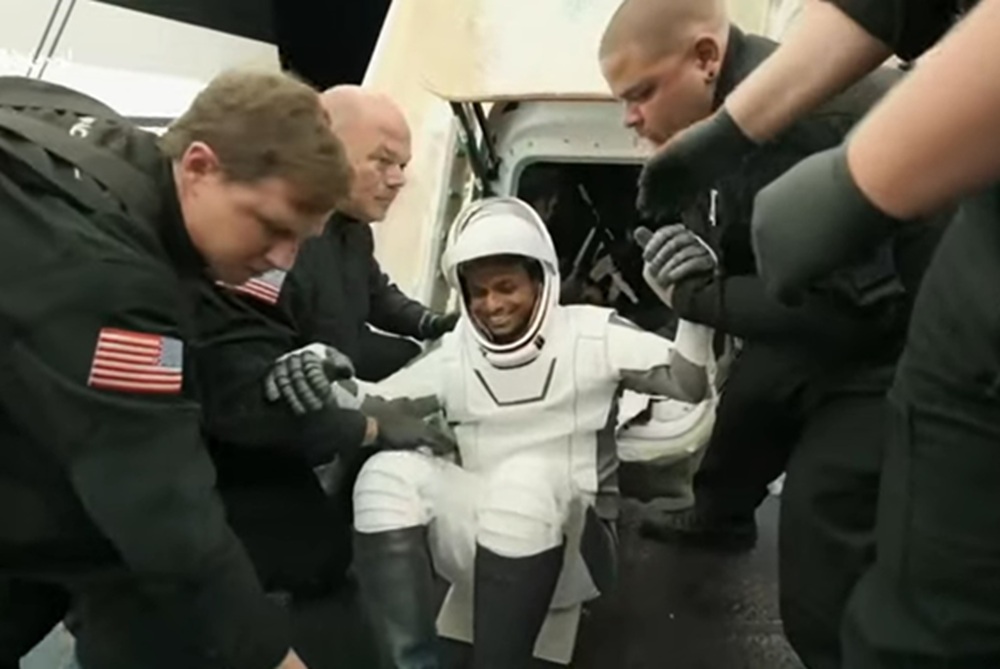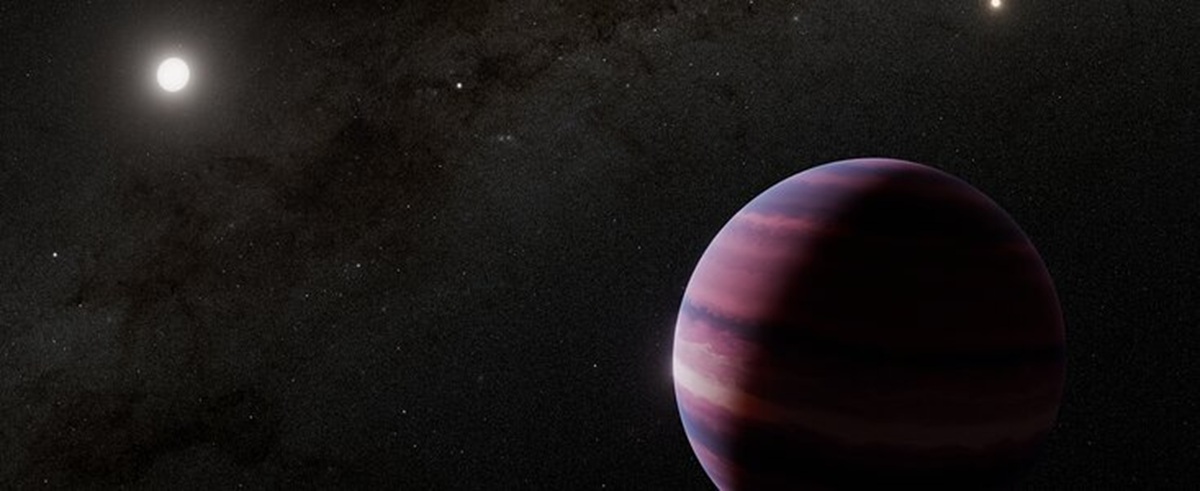On an August afternoon in New Delhi, Prime Minister Narendra Modi welcomed astronaut Shubhanshu Shukla to his official residence—a meeting that would come to symbolize something much larger than just a personal achievement. With Shukla returning from a landmark space mission, India was not only celebrating his success but was taking its first determined steps toward becoming a true spacefaring civilization. The interaction, which ranged from lively technical exchanges to philosophical reflections, underscored that India’s march to the stars has only just begun.
Shubhanshu Shukla’s Milestone
It was an afternoon dense with pride and possibility when Shubhanshu Shukla, the astronaut who’d carried Indian ambitions into microgravity, sat across from the Prime Minister. For Shukla, this journey had been years in the making—a voyage that went from the runways of the Indian Air Force to the tiny, humming chambers of a space capsule. For Prime Minister Modi, Shukla’s return was proof positive that Indian youth could now look up at the night sky and see more than distant stars; they could see their own futures.
“In 1984, when Rakesh Sharma went to space, becoming an astronaut seemed like an impossible dream for an Indian child,” Shukla recalled during the conversation. “Now, thanks to missions like Gaganyaan, our children see the universe as their canvas.”
Inside the Capsule: Life Beyond Earth

The conversation quickly turned from celebration to curiosity, with the Prime Minister probing the particulars of life in orbit. Did the seating arrangement stay the same throughout the journey? Was there enough space to move around? How did astronauts cope with the absence of gravity?
Shukla offered honest answers, painting a picture of both the challenges and rewards of space travel. While the capsule “wasn’t very spacious,” he noted it was more comfortable than a fighter jet cockpit—a comparison he knew well from his own days as a pilot. Astronauts, strapped in for 23–24 hours during launch, found relief once safely in orbit; they could unfasten themselves and float. The real challenge, Shukla explained, was not spatial, but physiological.
“Your heart rate slows down. The body begins to change. But in four or five days, it adapts,” Shukla shared. The process reversed on return to Earth, when even walking became a test of will: “You stumble, you need help, you know how to walk, but your brain needs time to re-learn the rules. It’s mental conditioning as much as physical.”
Prime Minister Modi seized on this insight. “That’s why we must train both mind and body for the future of Indian space missions,” he remarked, underscoring an important lesson for the next generation of astronauts.
Science in Space: India’s Agricultural Innovation Goes Cosmic
But Shukla was not just an explorer; he was a scientist on a mission. During his tenure aboard the space station, he conducted a series of experiments growing Indian staples—moong and methi—under microgravity conditions. These were more than botanical curiosities. In a world where resupplying food in space is costly and challenging, Shukla’s experiments proved that with just a small dish and a bit of water, Indian crops could sprout even in orbit.

What started as a symbolic gesture became a scientific breakthrough. “I was amazed how quickly the seeds sprouted… it’s so simple, but it could have big implications, not only for our astronauts but for food security on Earth,” Shukla explained. “Indian agricultural innovation is entering the realm of space research.”
These experiments, Prime Minister Modi suggested, were examples of Atmanirbharta—self-reliance—not just as a national slogan, but as a practical value in India’s space program.
India’s progress in space is no longer a secret. International astronauts, Shukla recounted, greeted him wherever he went with genuine curiosity and warmth. “They wanted to know about Gaganyaan. They asked about our space plans, and even wanted signed notes—some hoped to join us on future missions!” he said, noting the growing global recognition of Indian achievement.
“Shukla’s journey,” Prime Minister Modi observed, “is inspiring not just Indians, but the world.”
Training for the Future: Building a Pool of 40–50 Astronauts
The conversation then moved to the future—and it was here that Prime Minister Modi’s vision was both bold and clear. For India to consolidate its presence in space, he argued, the country must build a “pool of 40–50 ready astronauts”—not just heroes for the moment, but a durable cadre of pioneers for decades to come.
“Until recently, few Indian children dared dream of becoming astronauts,” the Prime Minister said. “But now, with role models like Shukla and the Gaganyaan Mission, that belief is spreading. Our pool of talent must grow.”
Shukla agreed, recounting how during school interactions following his return, at least one child in every session asked, “Sir, how can I become an astronaut?” For him, this change in attitude is one of the greatest successes of the mission.
“It’s no longer just a dream,” Shukla said. “Now, children know it’s possible—now there are options and a program. Representing India in space is a privilege, but helping the next generation reach new heights is a responsibility.”
Gaganyaan and Beyond: A New Era of Indian Space Missions
As the discussion turned toward policy, Prime Minister Modi outlined India’s space roadmap: “Now, we have two strategic missions ahead—the Gaganyaan human spaceflight and our own modular space station.”
Shukla stressed that India’s unique trajectory—marked by sustained government support, even after setbacks like Chandrayaan-2—has earned the respect of the global space community. “It was thanks to that ongoing commitment that we achieved success with Chandrayaan-3,” Shukla said.
He was quietly emphatic that India must not rest. “This is just the start,” he told the Prime Minister. “We must learn from each mission, bring those lessons home, and push on.”
Prime Minister Modi nodded, emphasizing that the foundation for future excellence lay in “atmanirbharta”—self-reliance in space technology and manufacturing. Shukla agreed: “The vision for Gaganyaan, the space station, the moon shot—all are linked. This dream, this ambition, will be realized if we build it at home.”
The Human Dividend: Inspiring Generations
What emerged clearly from the conversation was a sense of collective destiny. The Prime Minister saw in Shukla’s mission not only a technical milestone but a giant leap for Indian society. No longer would India look on the space race from afar; today’s achievements signal a new era of participation and leadership.
“Shukla’s journey is only the first step in India’s grand space ambitions,” the Prime Minister said, summing up the spirit of the meeting. “We need to dream bigger, work harder, and train the next generation—so that one day, the world will look up and see India leading the way, not just as passengers, but as pioneers.”
The National Imagination Takes Flight
The meeting between Shubhanshu Shukla and Prime Minister Narendra Modi marks a turning point—not just for one man, and not even for one mission, but for a nation’s sense of itself.
As Shukla left the Prime Minister’s residence that day, he carried with him not just the pride of accomplishment, but the weight of responsibility—one shared with millions of Indians now inspired to chase the stars. India’s journey to the cosmos may have just begun, but with leaders who dream boldly and pioneers who dare greatly, the sky is no longer the limit—it’s just the beginning.





